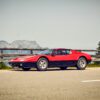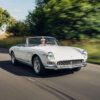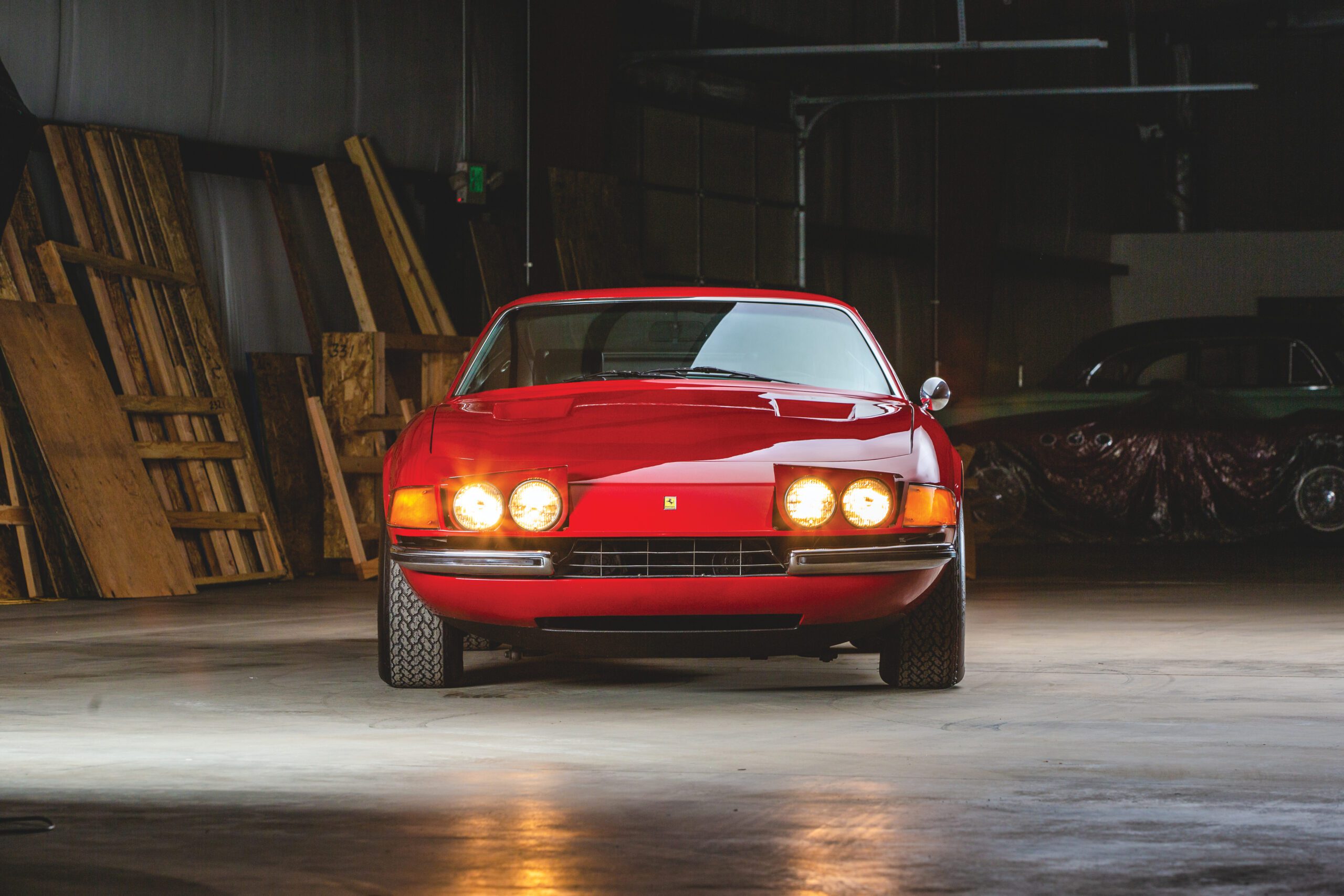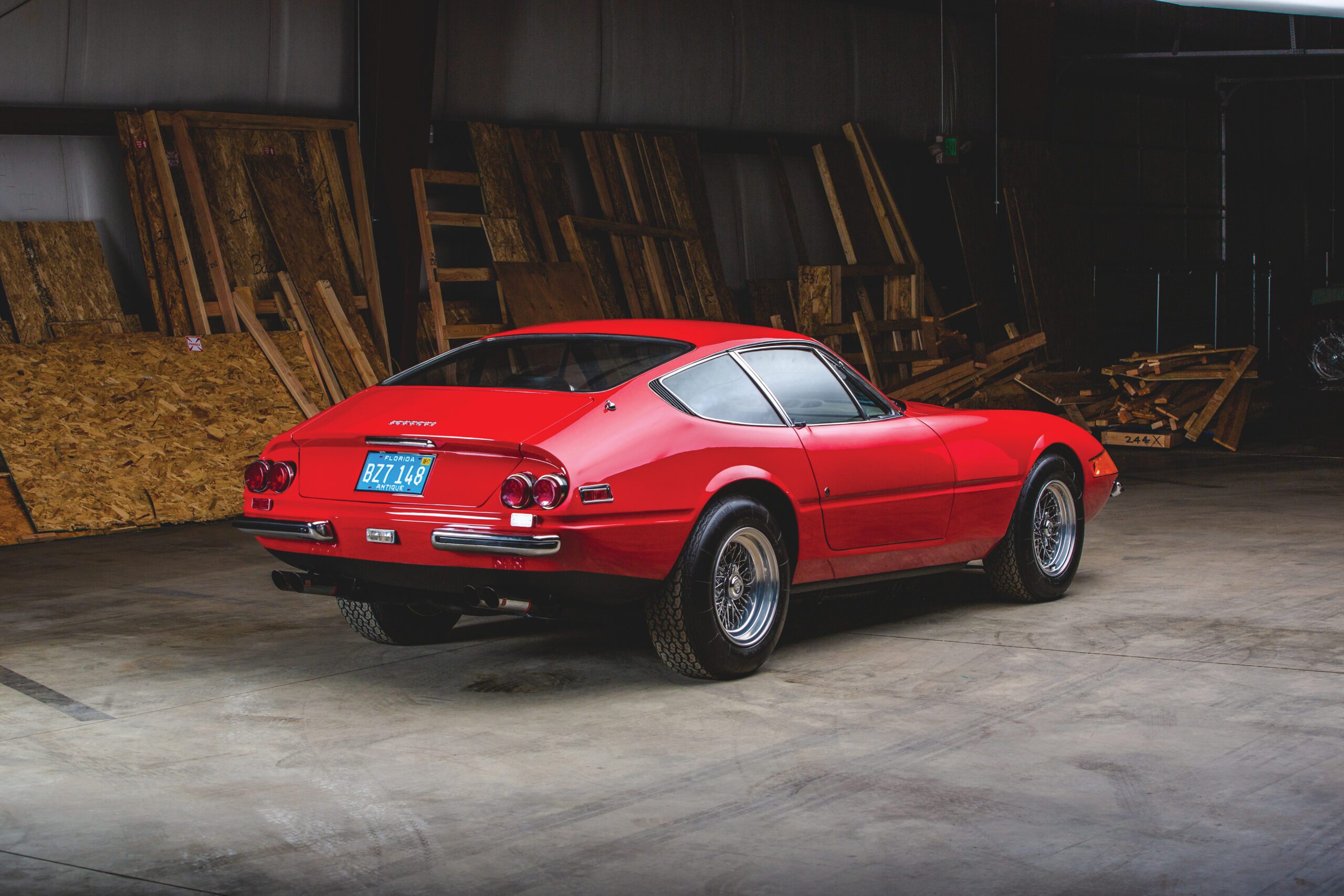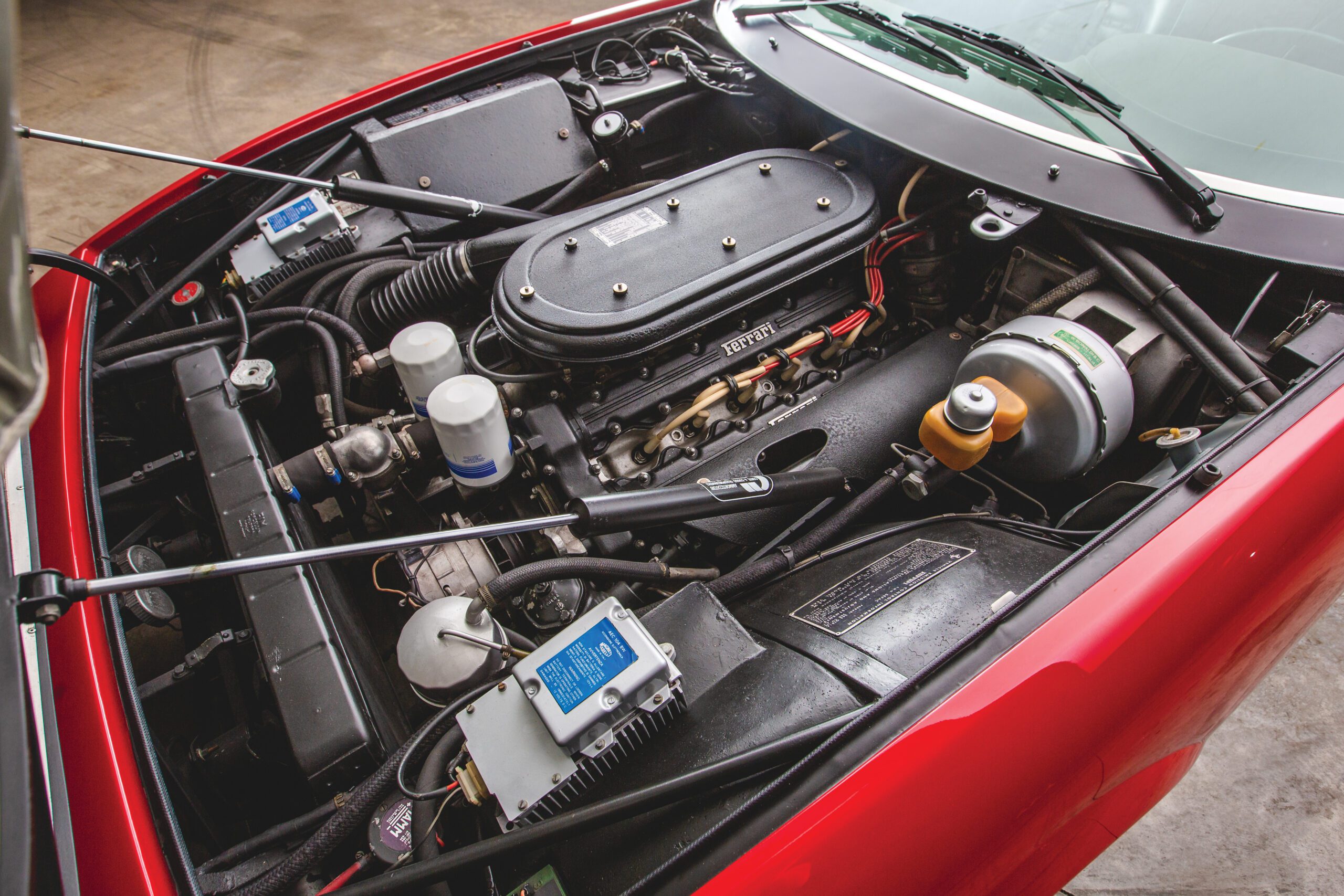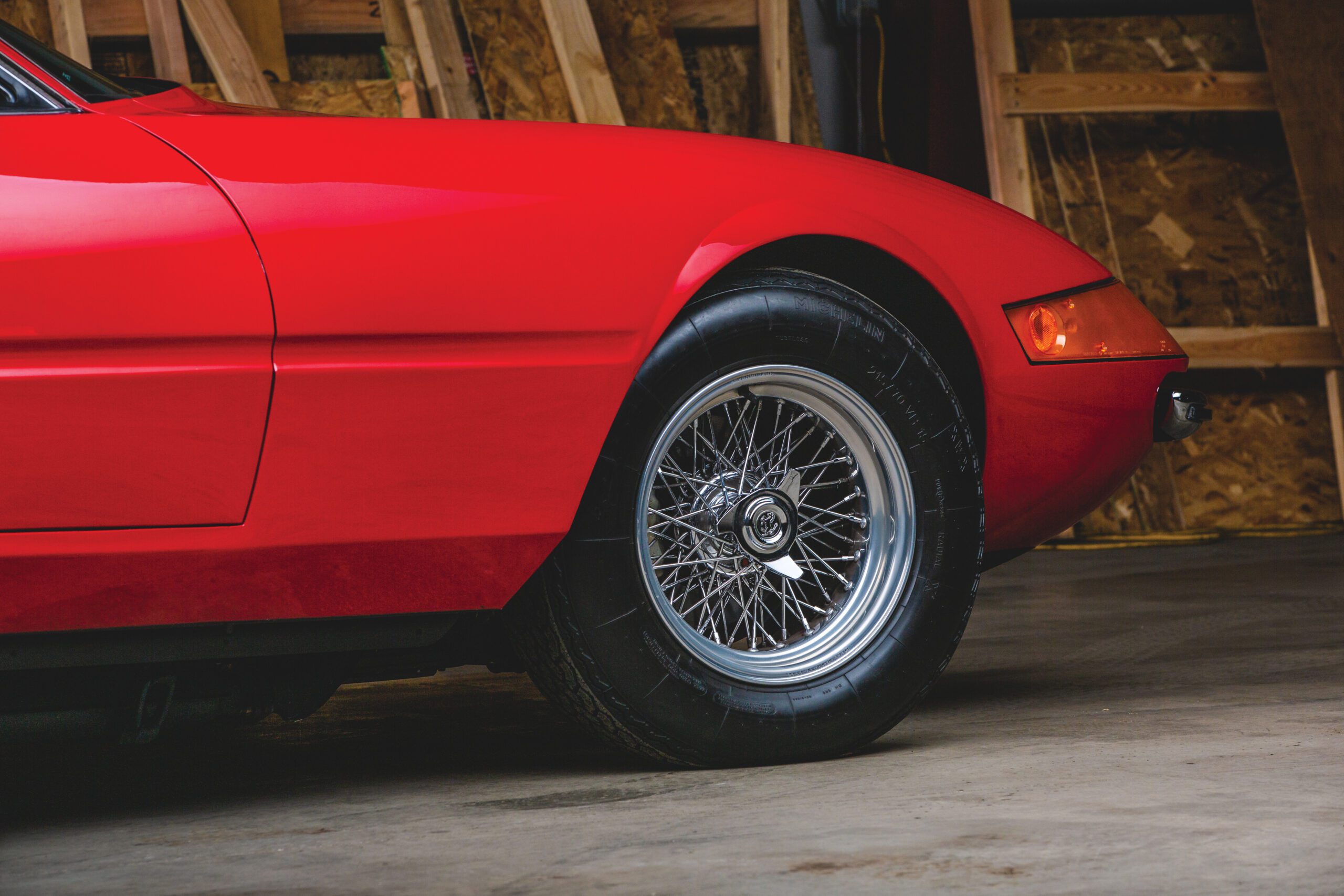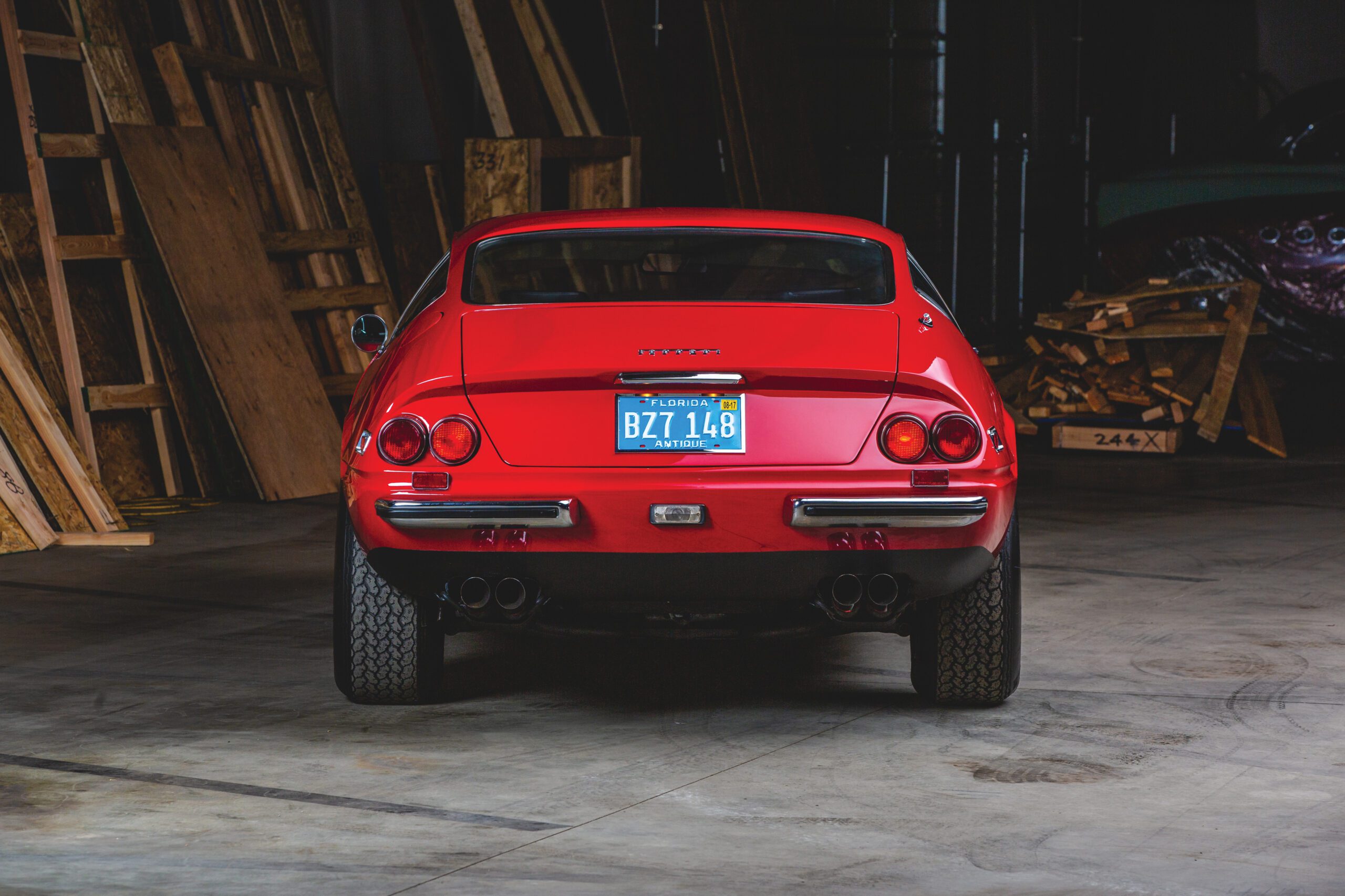In 1967, Ferrari began developing a more powerful 4-cam V12 Berlinetta, surpassing the successful 275 GTB/4. This new model needed to comply with emerging US federal regulations, requiring extensive development time. The first prototype appeared in winter 1967, featuring a design hinting at the final version but with a front end reminiscent of the 275 GTB.
Initially, a three-valve per cylinder 4-liter V12 engine was tested but ultimately abandoned in favor of the Tipo 251 power unit. This engine was a conventional 4.4-liter with hemispherical combustion chambers, twin-cam heads, and single-plug ignition, similar to the engines in the 365 GT 2+2, GTC, and GTS models.
The 4.4-liter engine utilized a dry-sump lubrication system with a 14-liter tank, an 8.8:1 compression ratio, and six Weber 40DCN carburetors, producing 352bhp at 7,500rpm and 318lbs/ft of torque at 5,500rpm. The mechanical setup, including the engine, torque tube, and rear-mounted 5-speed transaxle, was mounted to the tube chassis at four points, retaining the 2.4-meter wheelbase from the 250 GT SWB.
Pininfarina designed the new 365 GTB/4, combining Ferrari tradition with modern elements. The production bodies were crafted by Scaglietti, with Pininfarina building only the prototype body. Unveiled at the October 1968 Paris Salon, the model was quickly nicknamed the ‘Daytona’ after Ferrari’s 1-2-3 finish at the 1967 Daytona 24-Hour race. In early 1971, retractable headlights were introduced to meet US safety regulations.
The Daytona, capable of reaching 278km/h (172mph), was the fastest production car of its time and boasted the quickest acceleration, outperforming competitors like the Lamborghini Miura, Mercedes-Benz 350SL, Jaguar V12 E-Type, and De Tomaso Pantera.
Photos by Theodore W. Pieper courtesy of RM Sotheby’s


